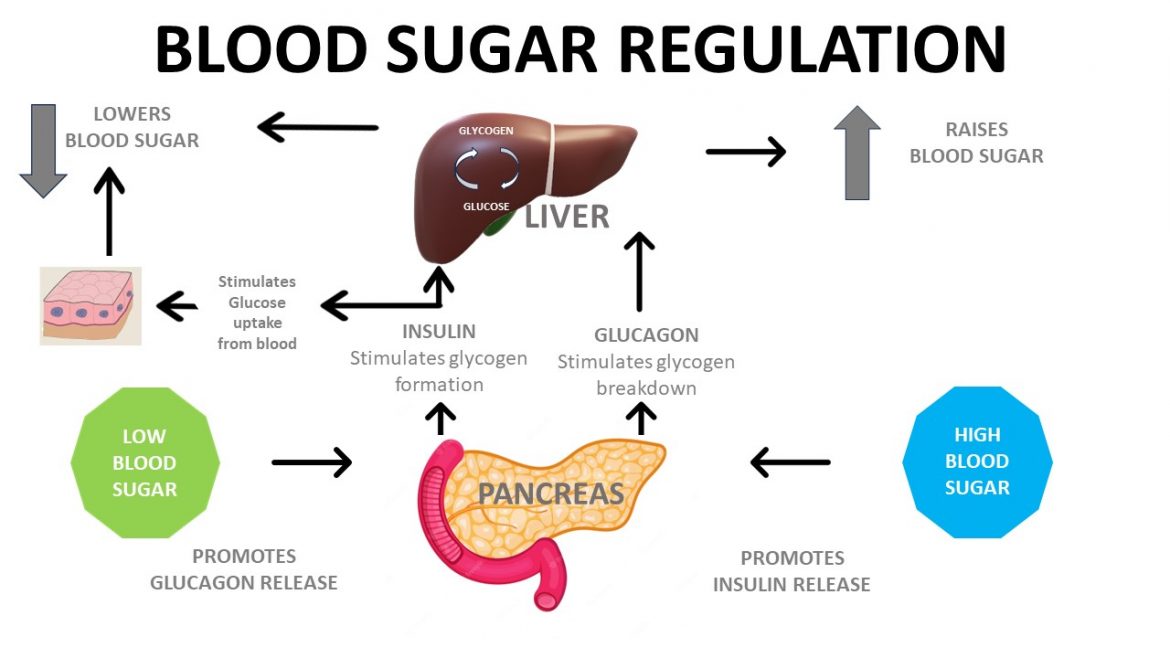Q: When you eat… what’s your purpose?
Have a think about this. When you reach for food, are you eating to curb hunger, nourish yourself or manage your energy?
When you learn the latest on your blood sugar levels you’ll perhaps eat with a new purpose in mind! Contrary to popular belief, our blood sugar levels are not just about diabetes. Linked with brain fog, hormonal imbalances (hello menopause symptoms), signs of ageing, energy rollercoasters and painful / inflamed joints, our glucose levels in our body (and how we manage them) can really help or hinder how we feel.
Managing glucose levels is rapidly being shown to be essential for overall health and wellbeing. Whether you have diabetes or not, maintaining stable blood sugar levels will help your long term health. There are some key tips that can help you on your journey. In this article, we will explore our top tips for managing glucose levels and how they can positively impact your health.
Understanding Glucose: What it is and why it’s important
Before we dive into the tips, let’s get a clear understanding of what glucose is and why it’s important. Glucose is a type of sugar that serves as the primary source of energy for our bodies. It is derived from the foods we consume, especially those high in carbohydrates. Glucose plays a vital role in fueling our cells, tissues, and organs, enabling them to perform their functions optimally. Yes, we NEED it. Glucose is essential for energy production and also contributes to various bodily functions. It is involved in the synthesis of proteins, supports brain function, and helps maintain healthy muscle tissue. Moreover, glucose levels affect the body’s ability to handle stress, regulate weight, and control appetite.
Tip 1: Healthy eating habits to regulate glucose
Incorporating healthy eating habits into your lifestyle is essential for regulating glucose levels. A balanced diet rich in whole foods, lean proteins, healthy fats, and complex carbohydrates can help support stable blood sugar levels. When it comes to maintaining glucose levels within a healthy range, there are several foods that can aid in this process. One such group of foods is fibre-rich fruits and vegetables. These natural sources of fibre not only provide essential vitamins and minerals, but they also help slow down the absorption of glucose into the bloodstream, preventing sudden spikes in blood sugar levels.
In addition to fruits and vegetables, incorporating whole grains into your diet can also contribute to better glucose control. Whole grains, such as brown rice, quinoa, and whole wheat bread, are packed with fibre and other nutrients that can help regulate blood sugar levels. Unlike refined grains, (white rice / bread / pasta) which are stripped of their fibre content during processing, whole grains provide a slow and steady release of glucose into the bloodstream.
So when you look at your plate, do you have some fibre rich and wholegrain foods on it?
In addition to being more conscious of what you eat, try applying these glucose regulating hacks.
- Take vinegar (or use lemons). Use it in dressings…. or add to recipes. You can even mix 1 tablespoon in a big glass of water before a main meal. Vinegar has been shown to slow down the release of glucose from food into our bloodstream. It also helps your muscles absorb the glucose in your bloodstream ready for use, rather than storing it in fat.
- Start your meals with salad or vegetables. Fibre ‘lines’ your small intestine and if it arrives there before your so carbs it helps flatten any glucose spike.
- Have a savoury breakfast that is low in carbohydrate. A high protein, fat and fibre meal will leave you feeling fuller for longer. Think eggs, avocado, greek yoghurt and seeds and berries. Add a sprinkle of muesli to your yoghurt rather than the other way round. (Good fats and proteins also make you feel fuller for longer)
- Move after food. A short walk or even some simple calf raises for 10 minutes will increase insulin sensitivity. Muscles that are being used mean that your cells are better able to use the insulin your body has just released. I’m doing heel raises under my desk as I type!
Tip 2: Regular exercise for glucose control
Exercise is not only beneficial for weight management and cardiovascular health but also plays a significant role in glucose control. When we engage in physical activity, our muscles require energy, and glucose in our body is used as the primary source. Regular exercise has numerous benefits when it comes to managing glucose levels. It helps to lower blood sugar levels, reduces insulin resistance and improves the body’s ability to utilise glucose effectively. Additionally, exercise promotes weight loss and helps maintain a healthy body weight, which is crucial for glucose control.
Do you move for about half an hour per day? If not, weave in a walk at lunchtime of after your evening meal. It doesn’t need to be massive but it will help.
Tip 3: Stress management and its impact on glucose levels
I know when I’m bored, frustrated or tired I reach for starchy foods and sugars. It’s not a good time for that though!
Managing stress levels is often overlooked but plays a significant role in maintaining glucose control. When we experience stress, our bodies release stress hormones, such as cortisol, which can significantly influence blood sugar levels. Additionally, stress can trigger emotional eating or unhealthy coping mechanisms, potentially leading to poor dietary choices and further affecting glucose control.
To better manage glucose levels, it is crucial to incorporate stress management techniques into your daily routine. Some effective strategies include practicing mindfulness and meditation, simple breathing exercises, engaging in regular physical activity, getting adequate sleep, and seeking support from friends, family, or professionals when needed. These techniques can help reduce stress levels and positively impact glucose management.
Even 15 mins of Pilates a day will help you manage your stress through whole body movement and a focus on breath.
(see our web site www.enhancewellbeing.ltd for ‘On Demand’ Pilates classes!)
In conclusion, managing your glucose levels is essential for overall health and well-being. By understanding the role of glucose in our bodies, implementing regular exercise and managing stress effectively, we can take proactive steps towards maintaining stable blood sugar levels. Let us know how you get on eating veggies first, or lemon / vinegar daily… or moving after eating.
Remember, small changes can make a big difference, so start incorporating these tips into your daily life and enjoy the benefits of optimal glucose management.

Lastly, we will share an SOS handbag secret. Having a pot of Forever Garcinia with you can also be useful. Fibre rich Forever Garcinia Plus contains chromium which contributes to normal macronutrient metabolism and the maintenance of normal blood glucose levels. If you can’t avoid a sweet treat then a couple of these can be a life saver! 15% OFF link HERE.

